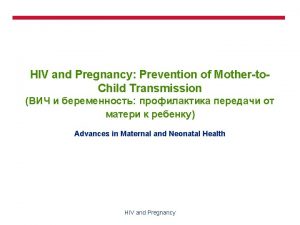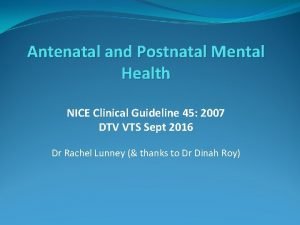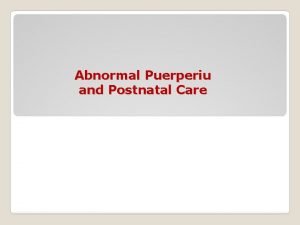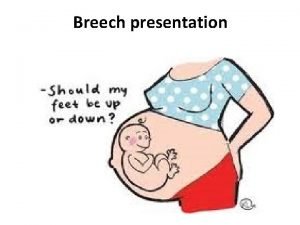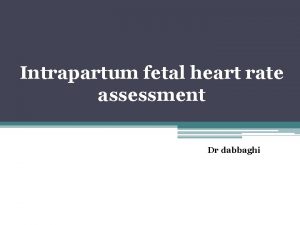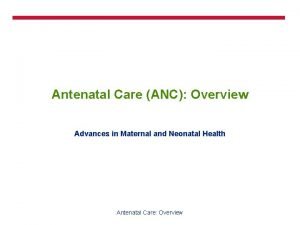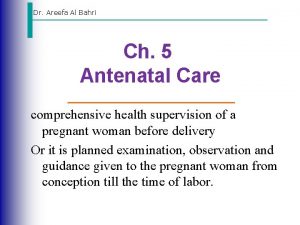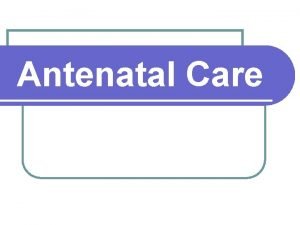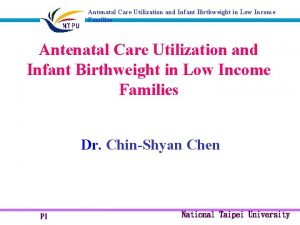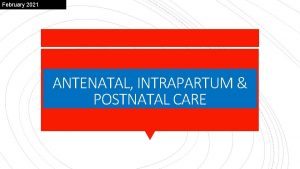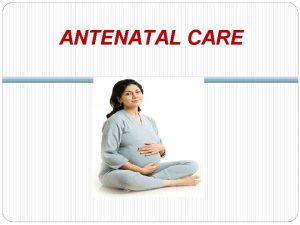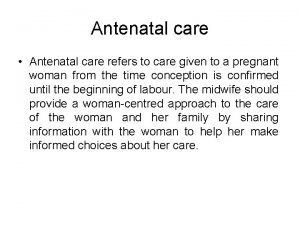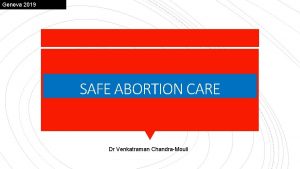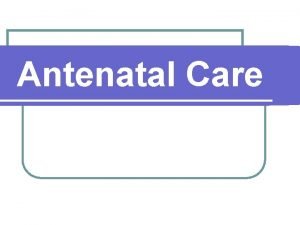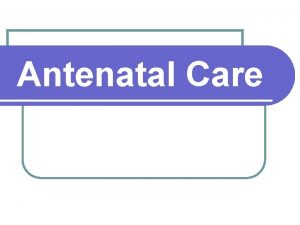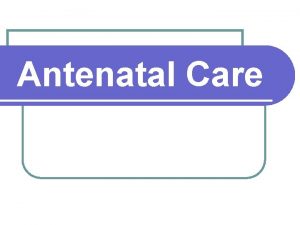Geneva 2019 ANTENATAL INTRAPARTUM POSTNATAL CARE Dr Venkatraman









- Slides: 9

Geneva 2019 ANTENATAL, INTRAPARTUM & POSTNATAL CARE Dr Venkatraman Chandra-Mouli

§ Antenatal care (ANC): Care provided during pregnancy by skilled health-care professionals to ensure best health conditions for both mother and baby. § Intrapartum care: Care provided during DEFINITIONS childbirth by skilled health-care professionals to ensure best health conditions for both mother and baby. § Postnatal care (PNC): Care provided up to six weeks following childbirth by skilled health-care professionals to ensure best health conditions for both mother and baby.

§ In many contexts, adolescent pregnancy is common: In RATIONALE – 1/2 2016, an estimated 21 million girls aged 15 -19 in developing countries became pregnant, approximately 12 million of whom gave birth. An estimated 2. 5 million girls aged under 16 years in low-resource countries give birth every year. Drivers are context specific; they include child marriage, poverty, lack of opportunity & values related to womanhood & motherhood. § Adverse maternal health outcomes among adolescents have major health & social consequences: Pregnancy & childbirth complications are the leading cause of death among girls aged 15 -19 years globally. In addition, adolescent mothers face higher risks of maternal morbidity. Early child bearing can increase risks for newborns as well as for young mothers.

§ ANC, IPC & PNC are effective: The health benefits of these interventions for mother and baby are clear. There are not ascertainable harms or burdens. § Access to & provision of good quality services RATIONALE – 1/2 needs attention: Adolescents face barriers to accessing & using skilled care before, during & after pregnancy. Certain groups of adolescents e. g. very young adolescents, unmarried adolescents, & those who are displaced because of war, civil strife or other emergencies face special barriers.

§ States are obliged under human rights law to provide ANC, IPC & PNC. § Upholding adolescents’ rights in this area is HUMAN RIGHTS OBLIGATIONS linked to state obligations to ensure universal access to a comprehensive package of SRH interventions before, during & after pregnancy to all women & girls. § Maternal health care should be free, confidential, adolescent-responsive and nondiscriminatory; third-party authorization requirements should be removed.

§ Pregnant adolescents, especially unmarried ones, often KEY CONCEPTS TO CONSIDER face barriers to accessing maternal health services including ANC, IPC & PNC: Ensure availability of & access to ANC, IPC & PNC, including emergency obstetric care. § ANC, IPC & PNC services are often not responsive to the needs of adolescents: It is critical for health workers to receive pre- & in-service training, & ongoing support to ensure they have the competencies & attitudes to provide high quality care, based on the rights of all people to health, confidentiality & non-discrimination.

§ WHO guidelines on preventing early pregnancy and poor reproductive outcomes among adolescents in developing countries (2011). § WHO recommendations on antenatal care for a positive pregnancy experience (2016). § Use of multiple micronutrient powders for point-of-use fortification of foods consumed by pregnant women (2016). § Optimal serum and red blood cell folate concentrations in women of reproductive age for prevention of neural tube effects (2015). § Guidelines for the identification and management of substance use and substance use disorders in pregnancy (2014). § WHO recommendations for prevention and treatment of pre-eclampsia and eclampsia (2011). WHO GUIDELINES § WHO recommendations for induction of labour (2011). § WHO recommendations for augmentation of labour (2014). § WHO recommendations for intrapartum care for a positive childbirth experience (2018). § WHO recommendations for prevention and treatment of maternal peripartum infections (2015). § WHO recommendations for the prevention and treatment of postpartum haemorrhage (2012). § WHO recommendations on tranexamic acid for the treatment of postpartum haemorrhage (2017). § Daily iron supplementation in postpartum women: guideline (2016). § Optimizing health worker roles to improve access to key maternal and newborn health interventions through task shifting (2012). § WHO recommendations on health promotion interventions for maternal and newborn health (2015). § WHO recommendation on community mobilization through facilitated participatory learning and action cycles with women’s groups for maternal and newborn health (2014).

§ Pregnancy, childbirth, postpartum and newborn care: a guide for essential practice, 3 rd edn. (WHO, 2015). § Managing complications in pregnancy and childbirth: a guide for midwives and doctors, 2 nd edn, (WHO, 2017). § Companion of choice during labour and childbirth for improved COMPLEMENTARY GUIDELINES TO WHO’s GUIDELINES quality of care: evidence-to-action brief (WHO, 2016). § Prevention and elimination of disrespect and abuse during childbirth (WHO, 2014). § Strengthening midwifery toolkit (WHO, 2011). § Obstetric fistula: guiding principles for clinical management and programme development (WHO, 2006). § Tibingana-Ahimbisibwe B, Katabira C, Mpalampa L, Harrison RA. The effectiveness of adolescent-specific prenatal interventions in improving attendance and reducing harm during and after birth: a systematic review. Int. J Adolesc Med Health. 2016; 30: (3).

§ Picture
